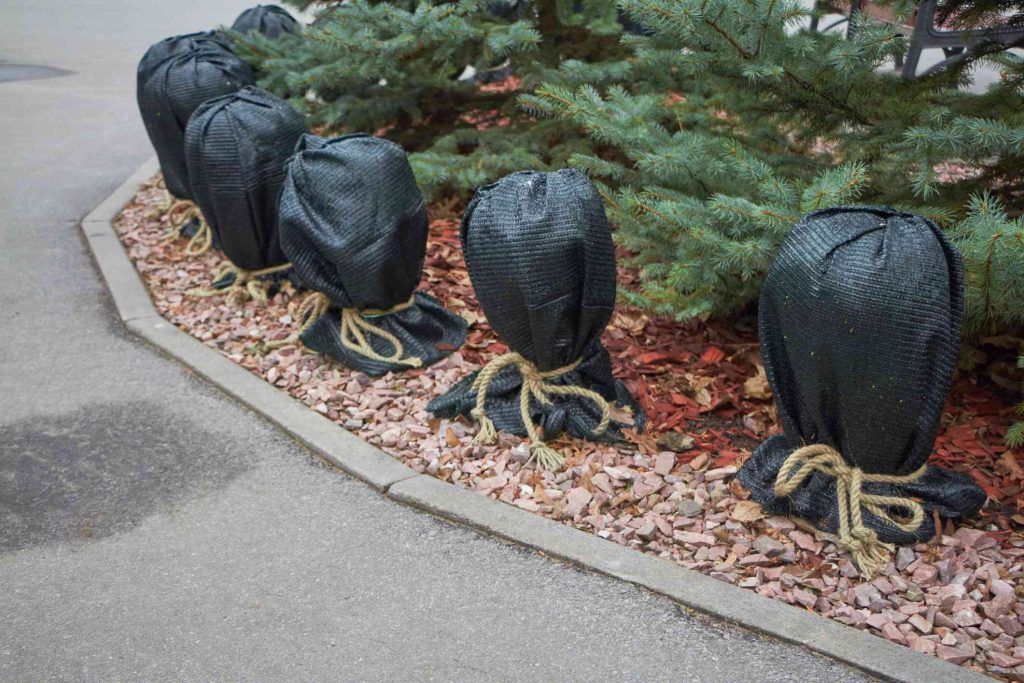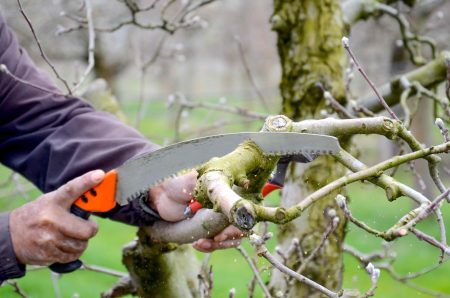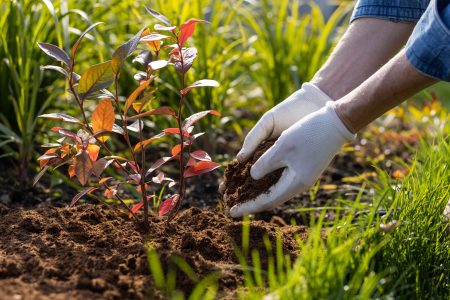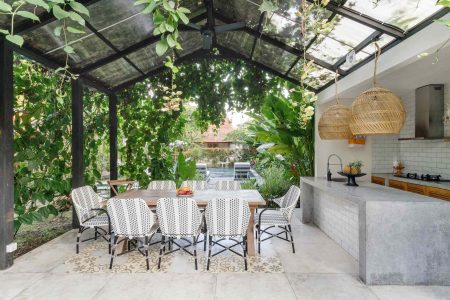With winter comes frost and freezing temperatures. While many plants are winter-hardy, others can be damaged by as little as one night of frost.
Learn how to protect plants from frost with simple techniques like timed irrigation or more permanent solutions like greenhouses and heat banks.
How Frost Damages Plants
When temperatures reach freezing or below, ice crystals grow within plant cells. The ice may rupture the plant’s cells, damaging parts of the plant or killing it. Frost can also damage plant roots.
Frost and freeze events are different. A frost is generally when the temperature reaches 36°F, and the plants may be able to recover. A freeze is 32°F, and a hard freeze is 28°F or lower. Plants may not be able to recover from a freeze or hard freeze.
Want more gardening tips? Sign up for our free gardening newsletter for our best-growing tips, troubleshooting hacks, and more!
Signs of Frost Damage
Signs of frost damage on plants include:
- Droopy or limp leaves
- Browned or blackened leaves
- Reduced growth
- Dead plant matter
- Overall reduction in plant vigor
Types of Plants to Protect From Frost
Prioritize the most at-risk plants before frost develops:
- Most annuals: Petunias, zinnias, nasturtiums, and many others
- Some vegetables: Tomatoes, peppers, spinach, eggplant, and others
- Some tropicals: Dahlias, hibiscus, angel’s trumpets, fruit trees, and more
Relocation
Overwinter delicate plants by moving them indoors. Plants already in containers can be moved intact to a sunroom or other suitable place in the home. It’s also possible to move plant specimens:
- Trim the plant: Cut back the plant by one-third.
- Transplant the plant: Move the plant and its root ball to a container filled with potting soil.
- Acclimate the plant: Alternate the plant in and out of the house, one week at a time.
- Check for pests: Before moving, check the plant for mites and insects, and remove them.
- Move the plant: Move the plant indoors for the winter before freezing weather develops.
Mulching
Protect plant roots by adding a thick layer of mulch around the base. Like a blanket, mulch insulates the soil and keeps temperatures stable.
The best time to apply mulch to the plants is in late fall. For frost-proofing, you can use either organic or inorganic mulch:
- Organic mulch: Organic mulch, made from living things, includes grass clippings, leaves, and wood, among others. Organic mulch both insulates and adds nutrients to the soil.
- Inorganic mulch: Inorganic mulch is made from rubber chips, plastic, rocks, and other synthetic or mineral elements. Inorganic mulch will insulate the roots against frost but will not add nutrients.
Cold Frames
Creating a cold frame is a popular way to protect plants from frost damage.
A cold frame is a low structure built over and around the plant but not touching the plant. A sloped, transparent lid lets sun in, for warmth, and the raised sides help protect the plants from the cold. You can build a DIY cold frame out of pressure-treated wood and plexiglass.
Greenhouses
You can use a greenhouse to bring your plants safely through the winter, even during hard freezes. A greenhouse’s opaque or transparent walls harness the power of the sun to keep plants warm during the day and long into the night.
There are many DIY greenhouse ideas, ranging from simple plastic storage bins and repurposed furniture cabinets placed indoors to full-scale barn-style and geo-dome garden greenhouses.
To safely carry plants through long, hard freezes, keep the greenhouse warm with geothermal heating, forced air heating, or with oil, gas, electric, or kerosene heaters.
You Might Need…
Building a DIY greenhouse from scratch isn’t practical for everyone, so purchasing a pre-built greenhouse is a better option. We evaluated factors like durability, ease of assembly, cost, and overall value to bring you the best greenhouses for your yard.
Cloches
Cloches are transparent or translucent caps for your plants. Traditionally, a cloche was a glass bell jar placed over each plant. But today, you can repurpose all sorts of items from around the home as cloches: plastic milk jugs, large glass jars, cones formed from wax paper, and large soda jugs.
In a pinch, use anything that can temporarily cover the plant, even if it’s not transparent or translucent: unused plant containers, flower pots, garbage cans, recycling bins, or plastic storage bins. Just remember to remove the cloche the next morning after the frost danger is over.
Row Covers
For larger gardens with plants arranged in rows, it’s difficult to cover them with individual cloches and move them into greenhouses. That’s where row covers come in.
Row covers are half-tubes made of a lightweight, breathable fabric or greenhouse film, a 6-mil plastic film similar to plastic sheeting. Elevated with hoops, the row cover runs the entire length of the plant row.
For a large-scale garden, it’s worthwhile investing in a set of row covers. A full kit capable of covering 25 feet costs about $200.
Irrigation
Irrigate the soil around your frost-sensitive plants soon before a frost arrives. Moist soil retains more heat than dry soil.
Deeply watered soil is dense and has sufficient mass to retain more heat than dry soil. The irrigated soil acts as a soil heat bank to slowly return the heat to the plants during the frost.
Container Wraps
Plant containers lack sufficient insulation to protect the roots during frost and freeze events. While it’s best to move plant containers indoors, sometimes the container is too big or it’s just impractical to move it indoors. In these cases, wrapping is the answer.
Zippered thermal plant container wraps cost $15 to $20 each. A drawstring at the top lets you cinch the top of the wrap closer to the roots.
Make a DIY wrap for large plant containers:
- Make a cylinder: Wrap chicken wire around the container to form a cylinder.
- Stake it down: Stake the cylinder to the ground with wood stakes.
- Insulate it: Fill the space between the container and cylinder with straw or leaves.
- Wrap it: Wrap the cylinder with burlap or cloth.
- Secure it: Wrap the burlap or cloth several times around with twine.
Frost Covers
Covering plants can help hold in the heat and prevent frost from developing.
Frost cloths made from fabric-like synthetics are lightweight enough to be placed directly on top of the plants. The cloths trap heat but allow sun and air to flow through.
Instead of frost cloths, you can use old sheets, blankets, or towels. Since they’re heavier than frost cloths, they should be elevated from the plant. Use wooden stakes, saw horses, pipes, wire loops, tomato cages, or anything available to prevent the cloth from touching the plant.
Heat Banks
Place heat banks or heat retainers near the plants. The heat bank soaks up the sun’s heat during the warmest part of the day, dispersing it as temperatures drop. Your plants benefit from the dissipated heat. Ideas for heat banks:
- Cinderblocks
- Five-gallon buckets filled with water
- Hay bales
- Bags or buckets of sand
- Stones
Plant Shelters
Add large sheltering structures or trees near the plants. The shelters not only act like heat banks, radiating stored heat, but they also reduce wind, which brings colder temperatures.
Add potting sheds, fences, rock walls, or rows of sheltering privacy trees like cedar, cypress, Lombardy poplar, or oleander. Just be careful not to block sunlight or airflow.
Frost-Hardy Plants
If your plants frequently succumb to frost damage, it may be time to consider shifting your garden toward more frost-hardy shrubs and herbs, vegetables, and winter flowers.
Phase out or reduce the number of plants easily damaged by frost. This also helps reduce the number of gardening tasks you need to do before winter.
| Frost-Hardy Plants | ||
|---|---|---|
| Vegetables | Shrubs | Flowers |
| Beets | Autumn Fern | Algerian Iris |
| Bok Choy | Banana Yucca | Bougainvillea |
| Broccoli | Bay Laurel | Camellia |
| Brussels Sprouts | Boxwood | Carolina Jessamine |
| Cabbage | Camellia | Coral Aloe |
| Carrots | Cast Iron Plant | Crocus |
| Cauliflower | Coral Bells | Cyclamen |
| Collard Greens | Creeping Juniper | Firespike |
| Garlic | Evergreen Azaleas | Hellebore |
| Kale | Hardy Cyclamen | Jasmine |
| Kohlrabi | Hellebore | Laurustinus Viburnum |
| Mustard Greens | Japanese Plum Yew | Pansy |
| Onions | Mahonia | Primrose |
| Parsnips | Red Twig Dogwood | Silk Tassel Bush |
| Peas | Rosemary | Snowdrops |
| Radishes | Snowdrops | Winter Aconite |
-
Can you save a plant exposed to frost?
A plant exposed to frost can possibly be saved, depending on the extent of the damage. An extended freeze, though, may rupture the plant’s cells and cause irreversible tissue damage.
-
Should I cut off frost damaged leaves?
Do not immediately cut off frost-damaged leaves. Leave the damaged leaves on the plant at first. Give the plant several days in warm weather so you can assess its health. If the plant survives, even dead leaves can remain on the plant for insulation against future frosts.
-
Will leaves grow back after a frost?
Leaves may grow back after only a light frost. However, wilted, droopy, or blackened leaves will not grow back. But this doesn’t necessarily mean that the entire plant is dead. Growth on other parts of the plant may be possible, even if certain parts are frost-damaged.
Read the full article here









